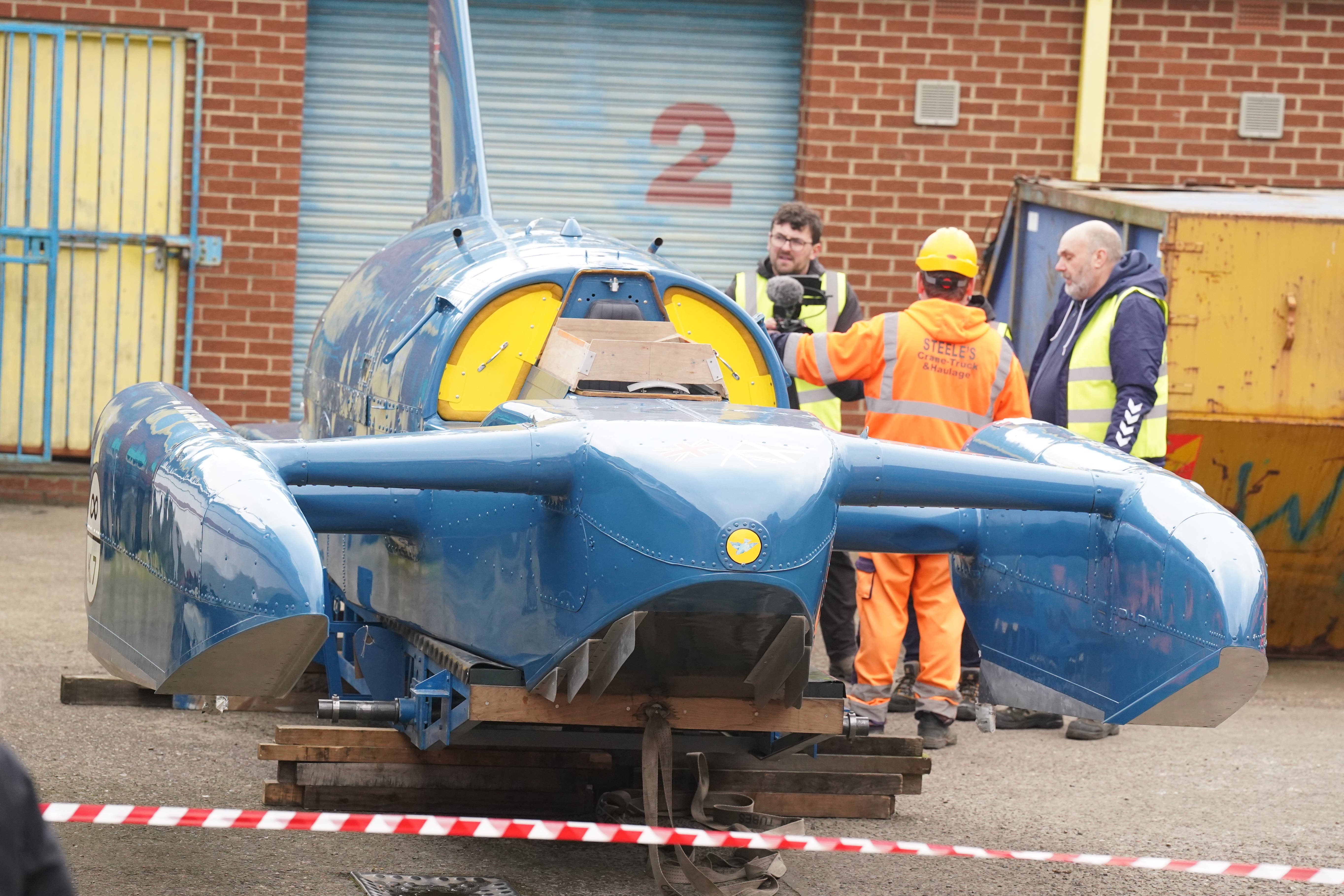Donald Campbell’s Bluebird begins journey to its Lake District ‘spiritual home’
The wreckage was recovered in 2001 by engineer Bill Smith.

Your support helps us to tell the story
From reproductive rights to climate change to Big Tech, The Independent is on the ground when the story is developing. Whether it's investigating the financials of Elon Musk's pro-Trump PAC or producing our latest documentary, 'The A Word', which shines a light on the American women fighting for reproductive rights, we know how important it is to parse out the facts from the messaging.
At such a critical moment in US history, we need reporters on the ground. Your donation allows us to keep sending journalists to speak to both sides of the story.
The Independent is trusted by Americans across the entire political spectrum. And unlike many other quality news outlets, we choose not to lock Americans out of our reporting and analysis with paywalls. We believe quality journalism should be available to everyone, paid for by those who can afford it.
Your support makes all the difference.The record-breaking hydroplane Bluebird K7 was returning to the Lake District on Saturday afternoon where it will be welcomed by the daughter of its pilot Donald Campbell in an “emotional reunion”.
The hydroplane flipped into the air and disintegrated, killing Campbell on January 4 1967 as he attempted a new water speed record on Coniston Water.
The wreckage, along with Campbell’s body with his race suit intact, was recovered in 2001 by engineer Bill Smith.
He restored the hydroplane with a team of volunteers at the Bluebird Project in North Shields.
After years of negotiations and legal disputes, it was agreed the boat would return to Coniston, which Campbell’s daughter Gina described as his “spiritual home”.
It will be put on permanent display in the Bluebird wing of the Ruskin Museum, a short distance from where Campbell is buried in Coniston Churchyard.
The vice chairman of the Ruskin Museum Trustees, Jeff Carroll, said the return of the vessel would be “an emotional moment for all concerned”.
Mr Carroll said: “Today is the culmination of a number of years of hard work.
“Finally, we can fulfil the deed of gift from the Campbell family from 2006, and the Bluebird wing will have its centrepiece.”
A team from the museum travelled to Mr Smith’s workshop on Saturday morning.
The boat was inspected and then transferred to a flatbed lorry for its journey to the Lake District.
Crowds of people, including a piper, were expected to turn out to welcome the boat when it arrives in the Cumbrian village later on Saturday.
The vessel is expected to reach its destination between 3:30pm and 4pm and will be welcomed to its new home by Ms Campbell.
“I can’t wait to see my father’s boat, this has been a long time coming”, she said.
“I am delighted that it will be back in Coniston for what will be a very emotional reunion.”
Campbell broke eight world speed records on water and on land in the 1950s and 1960s.
In his fatal record attempt, the son of Sir Malcolm Campbell, who himself held land and water speed records, had set himself a target of reaching 300mph on Coniston Water.
In August 2018, the reconstructed craft, fitted with a new jet engine, took to the water again where it hit speeds of around 150mph.
The Ruskin Museum will hold a press conference on Sunday to inform the public and media about future plans for the Bluebird K7 and to speak about its restoration.